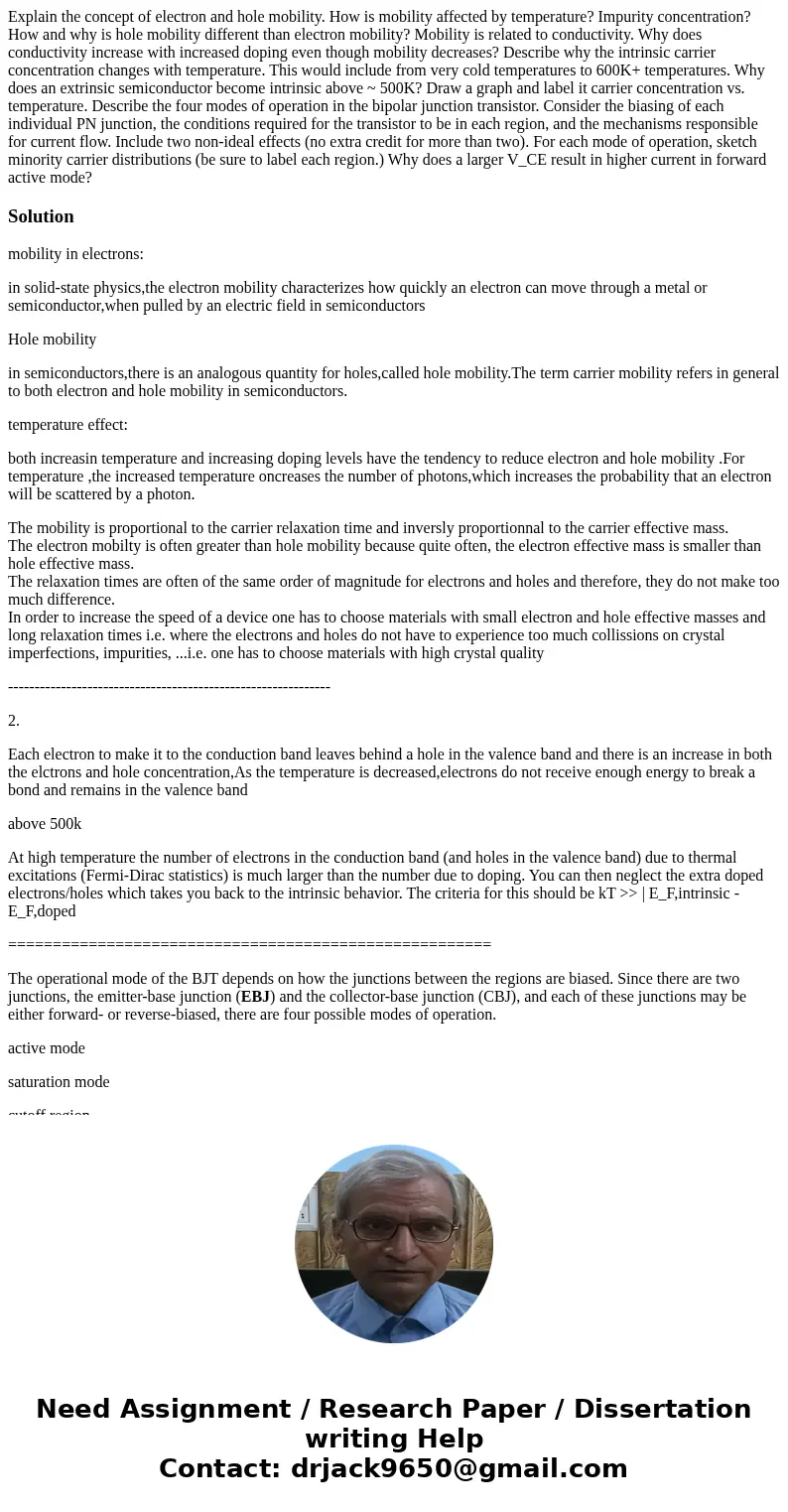Explain the concept of electron and hole mobility How is mob
Solution
mobility in electrons:
in solid-state physics,the electron mobility characterizes how quickly an electron can move through a metal or semiconductor,when pulled by an electric field in semiconductors
Hole mobility
in semiconductors,there is an analogous quantity for holes,called hole mobility.The term carrier mobility refers in general to both electron and hole mobility in semiconductors.
temperature effect:
both increasin temperature and increasing doping levels have the tendency to reduce electron and hole mobility .For temperature ,the increased temperature oncreases the number of photons,which increases the probability that an electron will be scattered by a photon.
The mobility is proportional to the carrier relaxation time and inversly proportionnal to the carrier effective mass.
The electron mobilty is often greater than hole mobility because quite often, the electron effective mass is smaller than hole effective mass.
The relaxation times are often of the same order of magnitude for electrons and holes and therefore, they do not make too much difference.
In order to increase the speed of a device one has to choose materials with small electron and hole effective masses and long relaxation times i.e. where the electrons and holes do not have to experience too much collissions on crystal imperfections, impurities, ...i.e. one has to choose materials with high crystal quality
-------------------------------------------------------------
2.
Each electron to make it to the conduction band leaves behind a hole in the valence band and there is an increase in both the elctrons and hole concentration,As the temperature is decreased,electrons do not receive enough energy to break a bond and remains in the valence band
above 500k
At high temperature the number of electrons in the conduction band (and holes in the valence band) due to thermal excitations (Fermi-Dirac statistics) is much larger than the number due to doping. You can then neglect the extra doped electrons/holes which takes you back to the intrinsic behavior. The criteria for this should be kT >> | E_F,intrinsic - E_F,doped
======================================================
The operational mode of the BJT depends on how the junctions between the regions are biased. Since there are two junctions, the emitter-base junction (EBJ) and the collector-base junction (CBJ), and each of these junctions may be either forward- or reverse-biased, there are four possible modes of operation.
active mode
saturation mode
cutoff region

 Homework Sourse
Homework Sourse